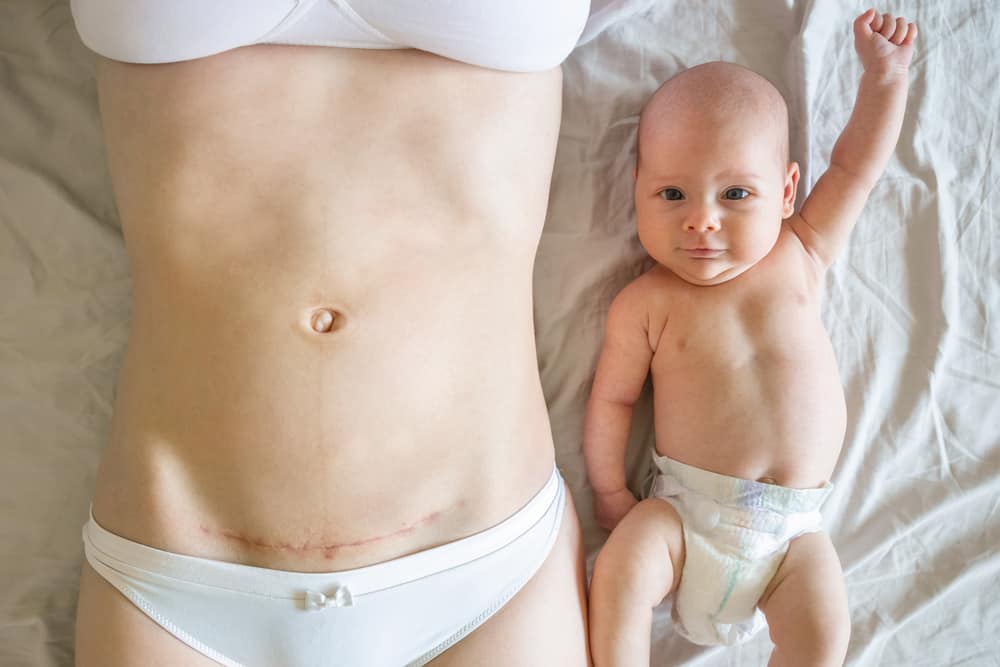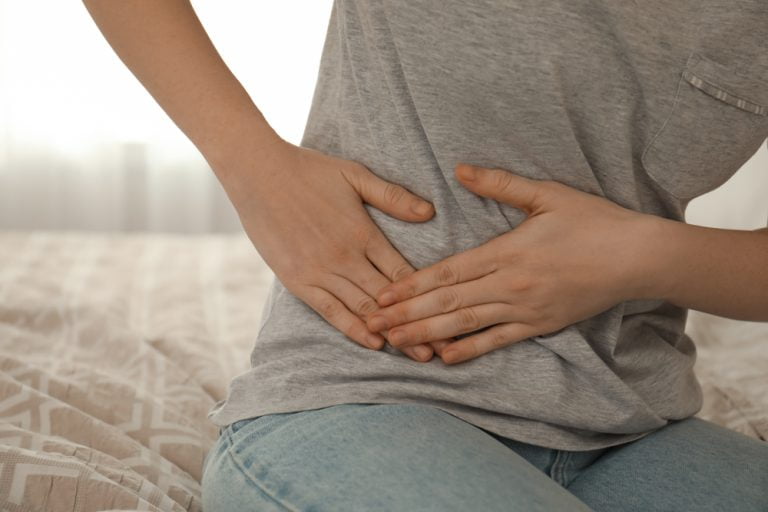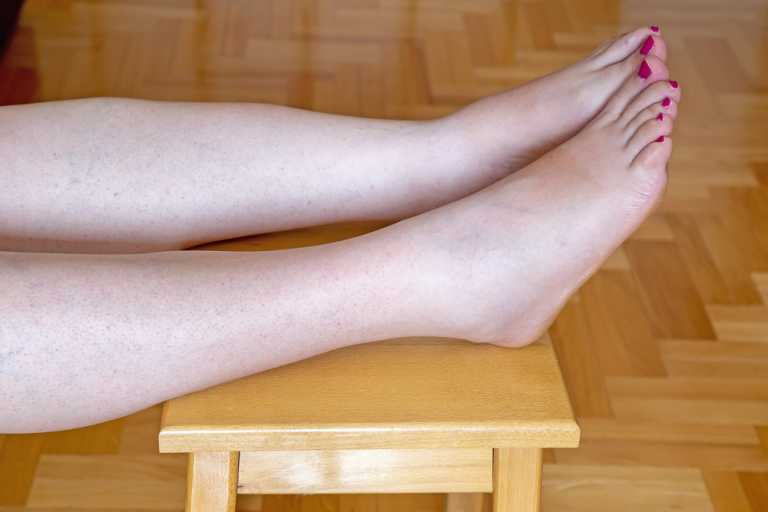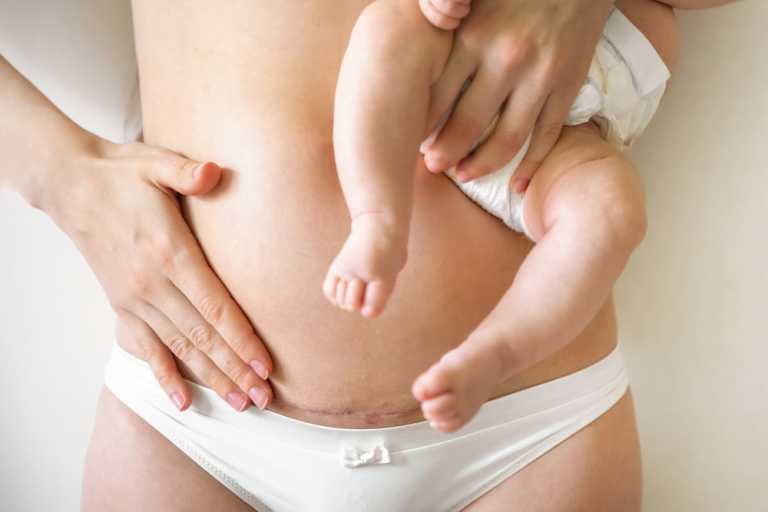Cesarean sections have the strange reputation of being the “pain-free” childbirth option. Of course, this is total rubbish. Everyone experiences pain after a c-section. But what’s normal? And how long does it last?
While you won’t feel anything during your cesarean, it’s still major abdominal surgery. So, when the meds wear off, expect some pain at your incision as well as cramps, sore breasts, and trapped gas.
The good news is that the human body is incredible and heals fast. After 3 days, you’ll be over the worst of it; after 6 weeks, you may be completely healed. However, in up to 15% of cases, pain can persist for months or even years. This is not normal, and if it happens to you, don’t put up with it. See your doctor for treatment options.
Here’s a rundown of the amount and type of pain you may experience in the days, weeks, months, and years after your c-section and when you should do something about it.
Day One
It’s normal not to feel any discomfort immediately after your c-section, as the medication you received with your anesthesia will still be working.
After around 18 hours, though, they will start to wear off, and your pain levels will peak. At this point, you’ll normally be given oral painkillers to take the edge off.
As they kick in, it’s a good idea to start moving around. Walking helps prevent swollen legs, reduces the risk of blood clots, and improves bowel function.
Unfortunately, movement will increase your pain levels. But it’s normal and considered “worth it” for the boost it’ll give your recovery. Just be aware and take it slow.
Cramps
You’ll also experience internal pain and cramps as your uterus shrinks. These can feel like intense menstrual cramps or even contractions. If you’re breastfeeding, you may notice they worsen while nursing.
Painful Urination
You may find it hurts to pee after your c-section. This can be caused by catheterization or irritation to the bladder during surgery.
Unfortunately, discomfort when peeing could also be a sign of infection. So, even though it’s a common side effect, you should still report it to your doctor.
Day Two
On day 2, you’ll still feel very sore, especially when getting out of bed.
To do it comfortably:
- Roll onto your side.
- Drop both legs over the edge of the bed.
- Push yourself up with your arms.
Some moms even recommend sleeping in an upright position if you can manage it.
Coughing, sneezing, and laughing will also really hurt as they put pressure on your incision. To make it more comfortable, press a pillow or a towel gently onto your stomach.
Trapped Gas
At this point, you may start to feel the effects of constipation triggered by the anesthesia. It can cause a build-up of gas in your bowels, resulting in shooting pains.
Sometimes, the pain can reach the chest and shoulders. This can be very distressing, and you may want to speak to a doctor to rule out anything more sinister.
To ease your gas and constipation:
- Drink plenty of water.
- Try peppermint tea or chewing gum.
- Eat fiber-rich foods like fruits and vegetables.
- Take regular, short walks. 5 to 10 minutes is enough.
Breast Soreness
Another source of discomfort might be your breasts, which may be swollen and sore as they produce colostrum.
If you’re breastfeeding, nursing your baby will reduce the pressure, and a cold washcloth between feeds can help. If you’re formula feeding, wear a supportive non-wired bra and avoid rubbing your breasts; this can stimulate milk production.
Day Three
By day 3, your pain should be significantly reduced, your cramps will have lessened, and your incision will be tender rather than painful.
At this point, you may even feel ready to stop taking pain medication. But it’s normal to need it for up to 2 weeks.
If your pain levels are increasing, see your doctor. They’ll want to check for signs of infection or a ruptured incision.
Staple Removal
If your surgeon used staples, they might take them out on day 3 or 4. This can be daunting, but you shouldn’t feel any pain. Your doctor will use a local anesthetic, and at most, you may feel some tugging.
Back Pain
You might notice some back pain on day 3. This can be due to the stress of holding your baby, sleeping in strange positions, or spending a lot of time in bed.
To relieve it, use a maternity or nursing pillow to support your baby during feeds and cuddles. Then, keep it with you at night to help you get into a comfy position for sleep.
You should also try to do regular shoulder circles and stretches throughout the day.
Week One
After a week, you’ll be much more comfortable and able to move around more easily. If you still find walking difficult, consider a postpartum belt for extra support.
Non-Dissolvable Stitches
If your surgeon used non-dissolvable stitches on your external wound, they’ll remove them around now. Don’t worry, though. This should be painless.
Weeks Two to Six
Between weeks 2 and 6, your incision will enter a new phase of healing called the proliferative phase. This is where a lot of work goes on: new tissues and vascular networks form, and collagen starts sticking everything back together. Unfortunately, your nerves will pick up on it, causing itching.
Week Six
Week 6 is the magic week in c-section recovery. At this point, your incision should be healed, your uterus will be fully contracted, and you’ll likely be pain-free. This means you can take a bath, exercise, and even have sex.
Pain Months or Years After Your C-Section
In some cases, pain can persist for months or even years after your c-section. It is not normal, but it does affect up to 15% of women.
Internal Pain Months After C-Section
As your internal incisions heal, there’s a chance of adhesions forming. These are bands of scar tissue that incorrectly join different layers of your belly. They can also bind tissue to organs, restrict blood flow, and disrupt the function of your intestines and bladder.
They can cause:
- Abdominal pain months or years after your cesarean.
- Difficulty sitting upright.
- Painful bowel movements.
- Swelling or bloating.
- Painful periods.
- Pain during sex.
- An indented scar.
- A darker scar.
To prevent adhesions, start massaging the area around your c-section scar at 3 weeks and the scar itself at 6 weeks. If massage doesn’t work, speak to your doctor, as you may need surgery.
Painful Scar Months After C-Section
In rare cases, your c-section scar may not have closed fully by 6 weeks. This leaves you vulnerable to infection and your pain returning months later.
See your doctor if you notice:
- Your scar is red and irritated.
- You have redness spreading across your stomach.
- Your scar has suddenly become painful.
- You have swelling around your scar.
- You notice discharge, blood, or pus leaking from your incision.
Abdominal Pain Years After Cesarean
Internal abdominal pain years after your c-section is most often caused by adhesions. But in rare cases, it could be a sign of abdominal wall endometriosis (0.03%-2%) or incisional endometriosis (0.03-0.45%).
This occurs when the endometrial tissue from inside your uterus ends up outside your uterus, where it implants and grows. It’s more likely if your internal pain is accompanied by the following:
- Severe menstrual pain.
- Bleeding between periods.
- Periods that are much heavier or contain clots.
- Uncomfortable bowel movements.
- Pain during sex.
Fortunately, unlike regular endometriosis, surgery can be very effective. However, as the condition is rare, it’s tricky to diagnose, so mention your concerns to your doctor.
C-section Scar Pain Years Later
If your scar is still sore years later, it could be due to adhesions, or you may have a keloid or hypertrophic scar. These are thick, raised, red, or lumpy. They can also be itchy and painful and are tricky to treat.
If you suspect you have this type of scar, speak to your doctor.
They may recommend:
- Corticosteroid injections.
- Laser therapy.
- Scar revision surgery.
Another cause of a painful scar years later is nerve damage. Some nerves will have been severed during your c-section. This is usually no big deal, but if they heal incorrectly, they can cause scar pain, which feels like:
- Electric shocks.
- Burning.
- Hypersensitivity to touch or water.
- Numbness.
- Tingling.
- Shooting Pains.
- Pain that spreads down to the thighs.
If you have nerve pain following a c-section, you will need to see a specialist for assessment and treatment.
Final Thoughts
Although everyone heals at different rates, the one constant is that your c-section pain should improve a little every day. If your pain gets worse or sticks around for months or years, call your doctor right away. It’s not normal, and you don’t have to put up with it.





I am 4 months post c section I had a kid kick me serverally hard at work and winded me I’ve been so sick since this happened and have been experiencing pains where my scar is should I be worried and see my doctor for a check up?